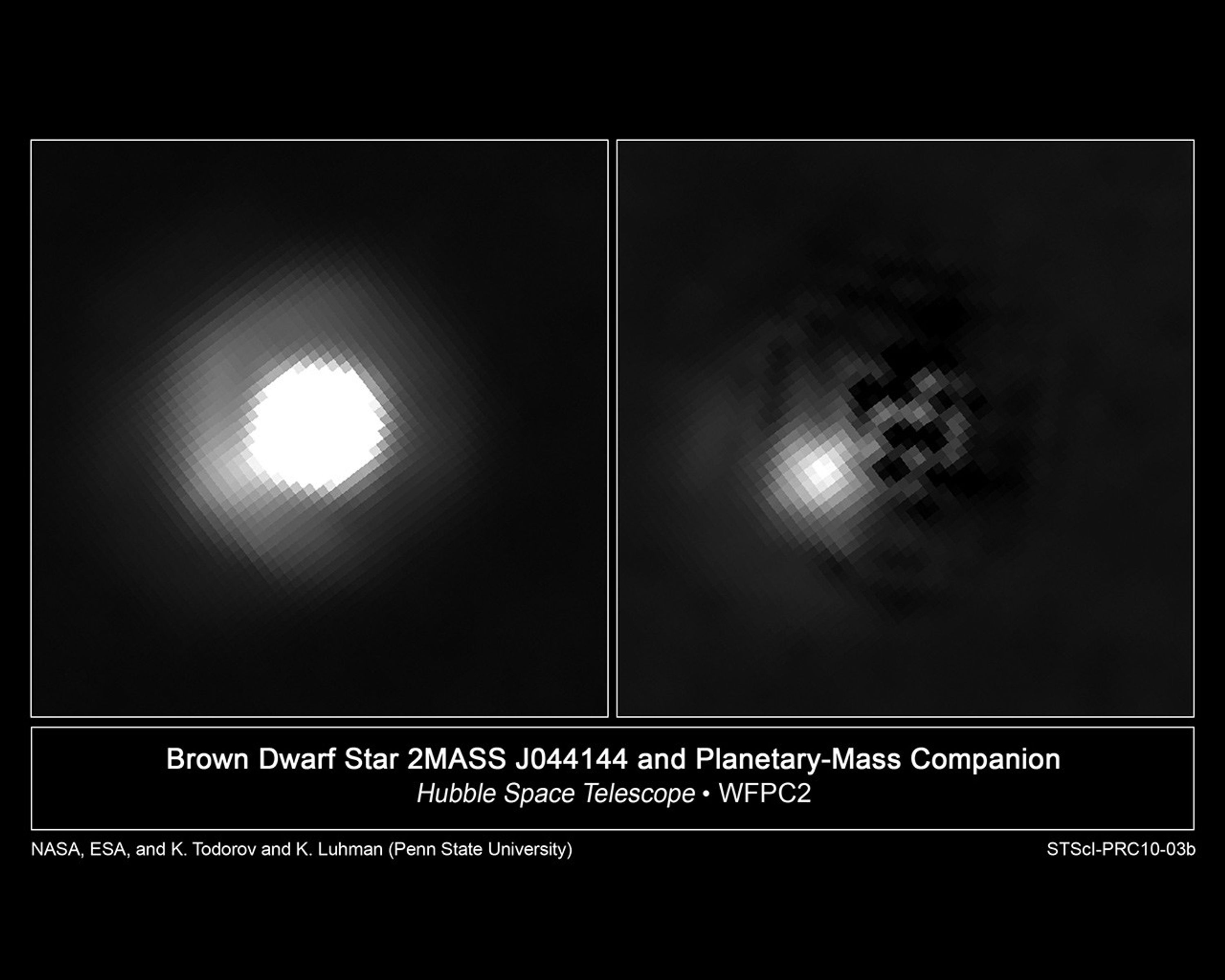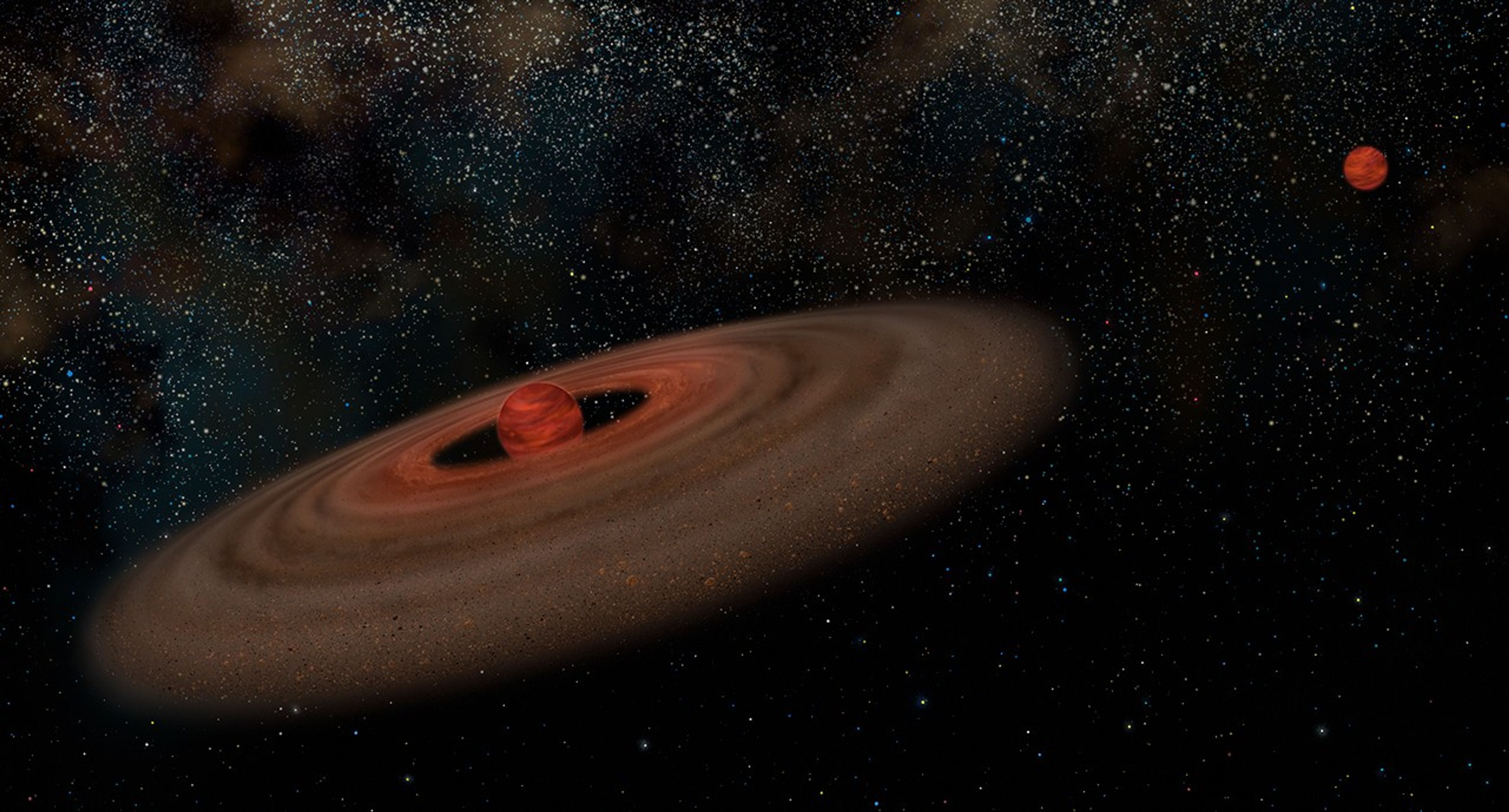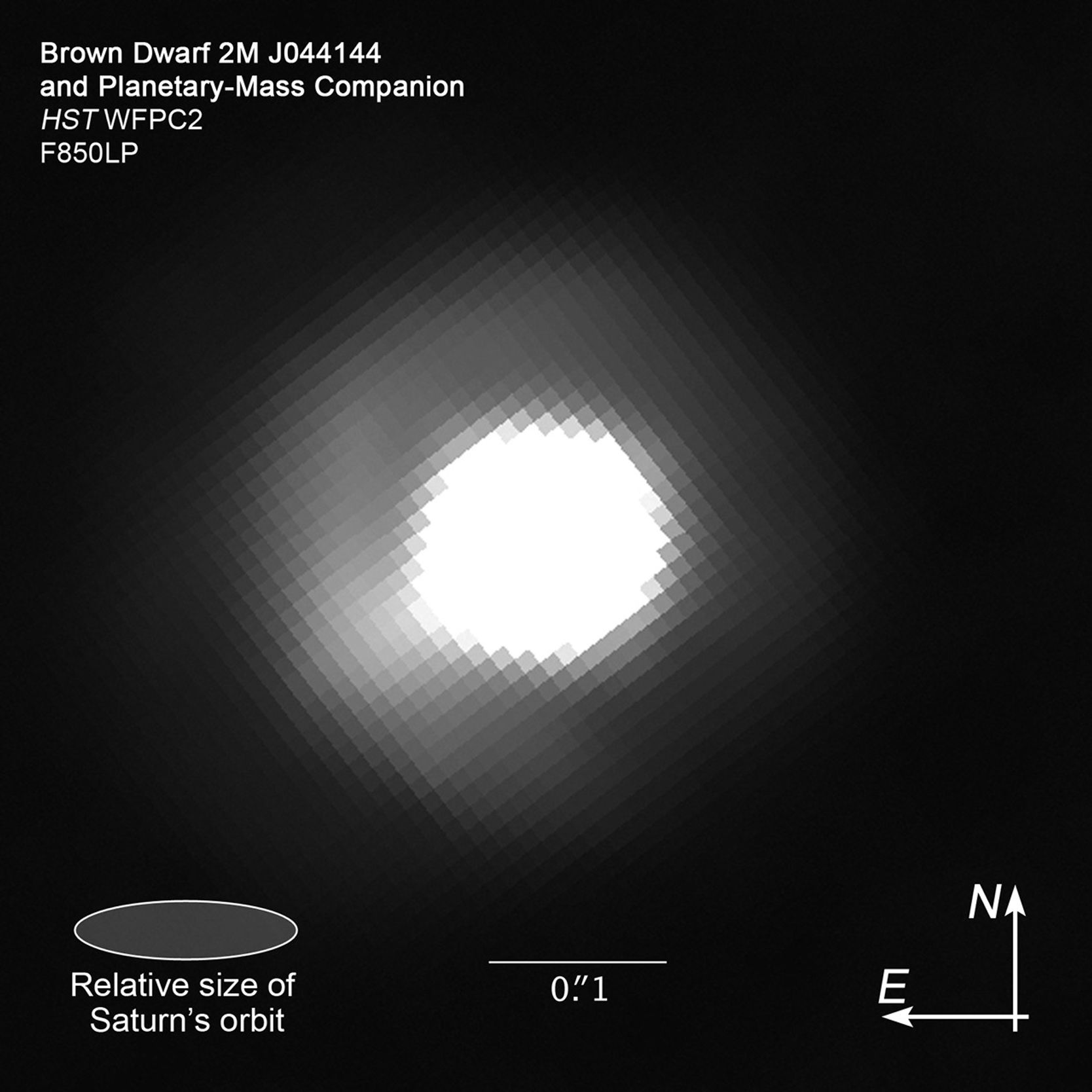1 min read
Brown Dwarf and Mystery Companion

This is a Hubble Space Telescope image of young brown dwarf 2M J044144. It has a companion object at the 8 o'clock position that is estimated to be 5-10 times the mass of Jupiter. In the right panel, the light from the brown dwarf has been subtracted to provide a clearer view of the companion object. The separation of the companion corresponds to 1.4 billion miles at the distance of the Taurus star-forming region, which is only about 1 million years old. The companion may be a very small brown dwarf or a large planet, depending on how it formed. Images were taken with Hubble's Wide Field Planetary Camera 2 to track the motion of the two objects to see if they actually do travel across space together. Additional observations were done with the Gemini North telescope on Mauna Kea, Hawaii.
About the Object
- R.A. PositionR.A. PositionRight ascension – analogous to longitude – is one component of an object's position.04h 41m 44.89s
- Dec. PositionDec. PositionDeclination – analogous to latitude – is one component of an object's position.23° 1' 51.39"
- ConstellationConstellationOne of 88 recognized regions of the celestial sphere in which the object appears.Taurus
- DistanceDistanceThe physical distance from Earth to the astronomical object. Distances within our solar system are usually measured in Astronomical Units (AU). Distances between stars are usually measured in light-years. Interstellar distances can also be measured in parsecs.460 light-years or 140 parsecs
- DimensionsDimensionsThe physical size of the object or the apparent angle it subtends on the sky.This image is 0.6 arcseconds (84 astronomical units) wide.
About the Data
- Data DescriptionData DescriptionProposal: A description of the observations, their scientific justification, and the links to the data available in the science archive.
Science Team: The astronomers who planned the observations and analyzed the data. "PI" refers to the Principal Investigator.This image was created from HST data from proposal 11203: K. Luhman (Penn State University) and K. McLeod (Wellesley College). Other collaborators include K. Todorov (Penn State University). - InstrumentInstrumentThe science instrument used to produce the data.HST>WFPC2
- Exposure DatesExposure DatesThe date(s) that the telescope made its observations and the total exposure time.August 20, 2008, Exposure Time: 7 minutes
- FiltersFiltersThe camera filters that were used in the science observations.F791W (I) and F850LP (I)
- Object NameObject NameA name or catalog number that astronomers use to identify an astronomical object.2MASS J04414489+2301513, 2MASS J044144
- Object DescriptionObject DescriptionThe type of astronomical object.Brown Dwarf with Companion
- Release DateApril 6, 2010
- Science ReleaseSmall Companion to Brown Dwarf Challenges Simple Definition
- Credit

Compass and Scale
Compass and ScaleAn astronomical image with a scale that shows how large an object is on the sky, a compass that shows how the object is oriented on the sky, and the filters with which the image was made.
Related Images & Videos

Binary System 2M J044144 (Artist's Concept)
This is an artist's conception of the binary system 2M J044144 showing the primary brown dwarf that is estimated to be approximately 20 times the mass of Jupiter (at left) and its companion that is estimated to be 7 times the mass of Jupiter (at right). The disk of the primary...
Share
Details
Last Updated
Aug 17, 2025
Contact
Media
Claire Andreoli
NASA’s Goddard Space Flight Center
Greenbelt, Maryland
claire.andreoli@nasa.gov



































